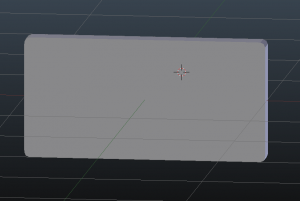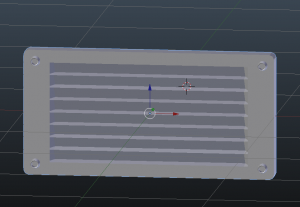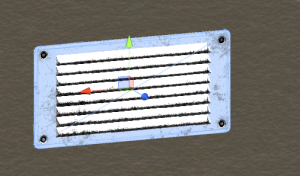Alpha.001 post mortem
I thought for my first blog I would share what we have learned thus far in the process of creating INT. Let’s start from the beginning, at least the beginning I am aware of. I joined the INT project almost three months ago as a modeler. At that time, we had a foundation for the first level of the demo and a feel for what it would take to design it. Since that time, however, the demo has undergone many changes, and we have learned quite a bit about what it really takes to make a game in Unity, the 3D game engine.
The substructure, or the fundamental outline of what needed to be created for the demo, was there when we started. But when we actually began adding the elements into Unity we quickly discovered that we already had made some general errors. The elements in question were mostly the 3D models we were making but also included the lights and other settings in Unity. We found that we had not truly looked into exactly how the camera and character might interact with the layout and environment. The lighting issue, then, quickly became a challenge, one that involved negotiating the rendering path, lightmapping and dynamic light settings. Moreover, each decision altered the overall function and performance of the game. In short, we found that we had set our sights way too low on some parts of the project and perhaps too high on others.
Part of the struggle is that INT is a role-playing game that was conceptualized with the default camera angle to be overhead. Such a perspective harkened back to the days of Baldur’s Gate Store.steampowered.com, a game that was released originally in 1998. However, the reality is that modern gamers expect more from a game produced in 2014. We are currently creating a much more versatile camera rig and are still ironing out the bugs to get just the right look for our game.
Another struggle that we encountered was finding the right balance between polygons and the believability of the assets in the game. Polygons are the building blocks of any digital model. For simplicity sake, imagine using a number of little rectangles to build an object. The more rectangles that you use and the smaller that they are, the more detailed the object can be. However, increasing the number of rectangles for objects in INT requires the Unity game engine to work harder. So, we have to find the right balance between detail and performance for all the digital models that we create. We found that we probably went too low on the original assets we made. In other words, we should have used more rectangles, as the resulting models were too simple and not detailed enough. We have now decided to use a slightly different method where we create the low-poly mesh and high poly-mesh and “bake” the results instead of relying on textures created outside the modeling programs. What this process does is use a series of images in certain formats to make a simple mesh look much more detailed.
Here is an example:
In-game with the details of the high poly baked to the low poly in-game with 42 polys:
In addition to the detail-performance balance for our digital models, we currently are addressing a set of minor bugs relating to the science-fiction orientation of our game, which took a bit of research to answer. We have decided to go with a PBR (Physically Based Render) lighting/texturing system in Unity, because INT is a futuristic game filled with metal and other hard surfaces. This option allows for metals to look more realistic and have the qualities of reflection not available in the standard lighting/texturing models that come shipped with Unity. We believe that this system will offer players a better gaming experience in the long run.
The team continues to move forward as we tackle each challenge: concept artists pump out ideas; modelers add detail and color to their designs; and coders create systems for achievements, inventory, quests and number of other “small” issues that establish a detailed and rich gaming environment, such as turning lights on or off in a given room within the game.
Team Members:
Tom is one of our concept artists and is working on new concepts for furniture, the apartment sequence in the demo and some very cool assets for the streets outside of the apartment.
Kong, concept artist, (yes, that is his real name) is hunkered down in Australia creating and drawing guns, apartment furniture and a couple of NPC (Non-Player Character) companions.
Nathan, also a concept artist, is concentrating on the people that fill up the INT universe and the things that they wear.
Mark, our lead coder, is trying to figure out the best way to make the UI fit our needs by finding a place for all the items you will find in the game.
Guilermo is finding the best way to make the Camera rig, character movement and animations work together, as well as coding the skills system that will reflect your character’s identity and personality.
Jeremy is helping me with small coding issues as we get the assets into the game and working on the achievement system that catalogs your accomplishments.
Victor is hard at working bringing the concepts of the people of the INT universe to digital life with his sculpting abilities.
Last but not least, Lachlan is really adding the digital life to the characters by designing and implementing the character rigs and animation.
Me, well I’m modeling, implementing the assets into Unity and generally trying to solve the problems that come up. On top of that, I have to keep all those guys above in line and working.
All in all, the project is coming along well. We have a plan and are sticking to it. We should have some exciting material to actually show you in the upcoming month.
Until next time,
Thanks for your interest
Monte Drebenstedt
DevTeam Lead for the INT project




